
Maruti Brezza Vs Hyundai Venue Vs Tata Nexon – Ride And Handling
- Oct 30, 2022
- Views : 8879

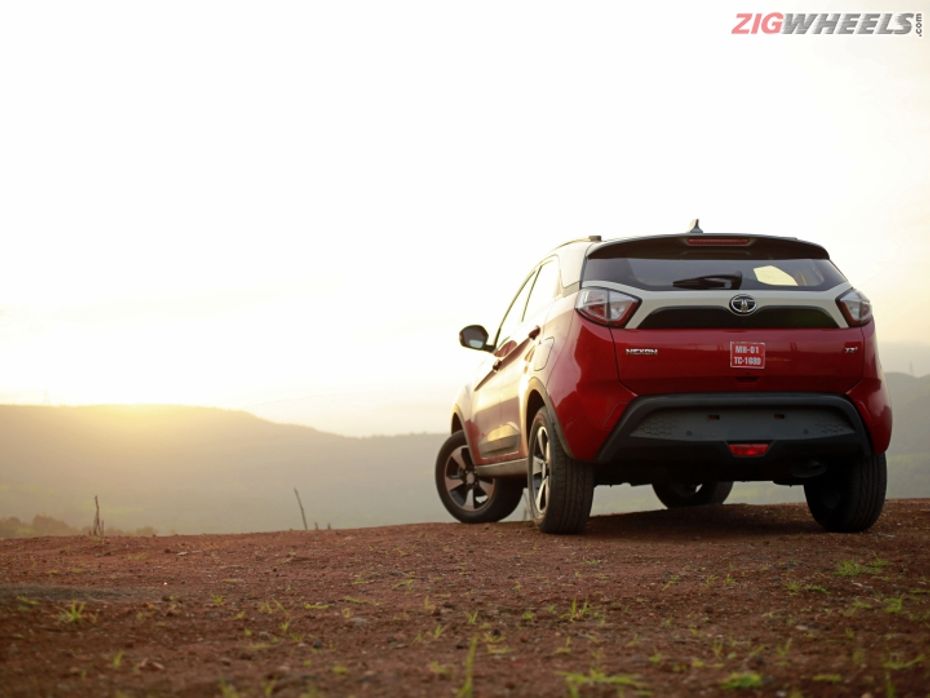
Ooooh, what’s that?
The red and blue compact SUVs in the secluded office parking lot attracted a lot of attention. I had more conversations with strangers this past week than through most of my life. I even made new acquaintances in my colony the first time since I moved here almost a year ago.
That's how interested people are in Tata's latest offering.
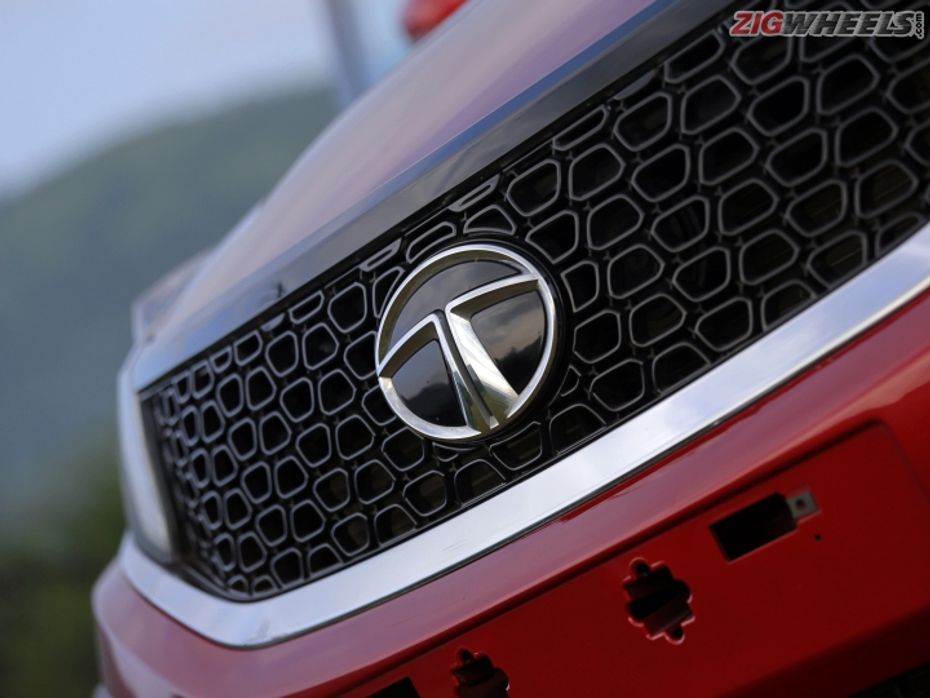
Tata is late to the compact SUV party in India, but the Nexon has been grabbing eyeballs and perking up ears ever since it was first shown as a concept back in 2014. It can be safely assumed that very few of us were expecting Tata to bring that concept onto the road almost as is.
Looking good
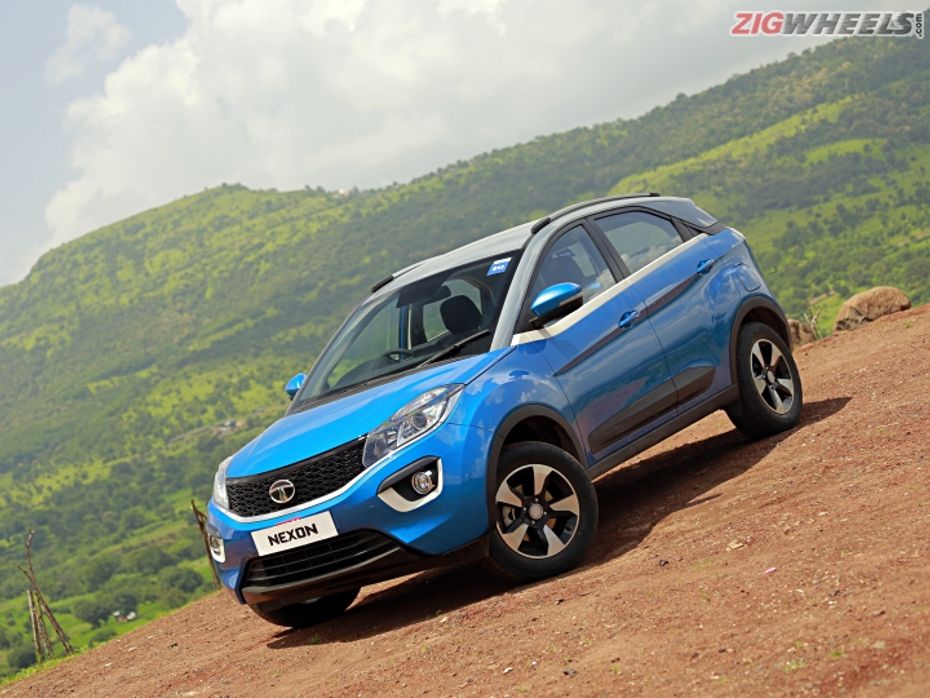
But they did. The Tata Nexon would be at home on the stage of a concept car show. The bright colours (red and blue in this case), white sash along the side and rear, contrast coloured roof, a curvaceous overall design and tyres that fill up the wheel arches give the Nexon a fresh look. The bold design helps the Nexon grab attention like nothing else on the road. Tata's bait is working.
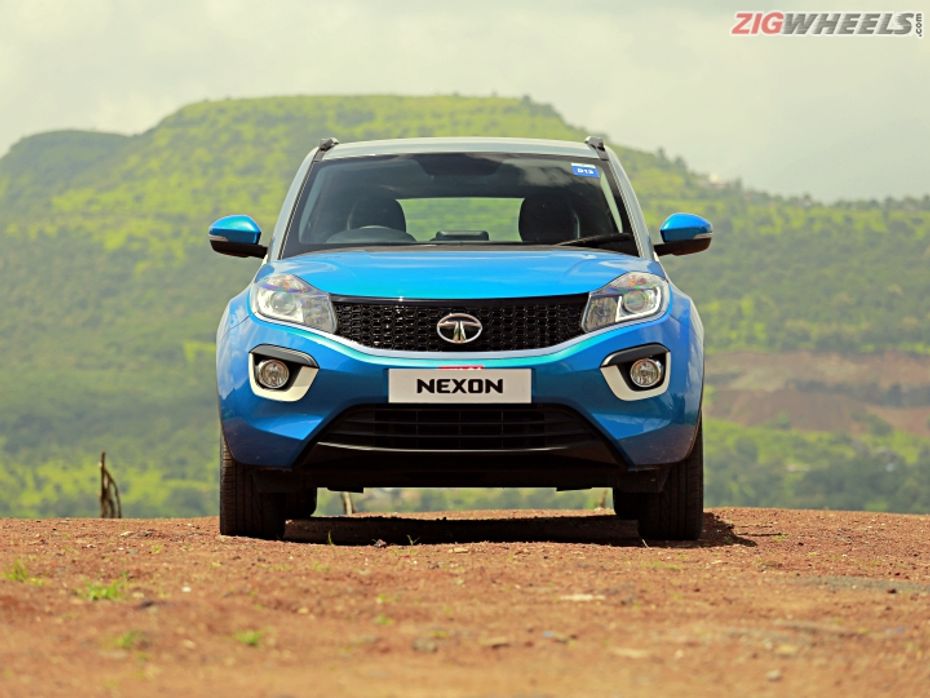
There are a lot of exciting details around the Nexon. The petal shaped headlamps with the bulge on the top, bright LED DRLs, projector lamps with halogen bulbs, partial white fog lamp surrounds, a meaty looking black air dam in the bumper are the highlights at the front. A chrome highlight flows underneath the grille and into the headlights. An interesting feature is that the front fog lamps also double up as cornering lamps at night - each one lighting up the road a little better when you take a corner. The flared out wheel arches make the Nexon look wide, an effect also seen on the Renault Duster/Nissan Terrano. In fact, the Nexon is the widest car in the segment - at 1811mm wide, it is 21mm wider than the Maruti Suzuki Vitara Brezza and 46mm wider than the Ford EcoSport.
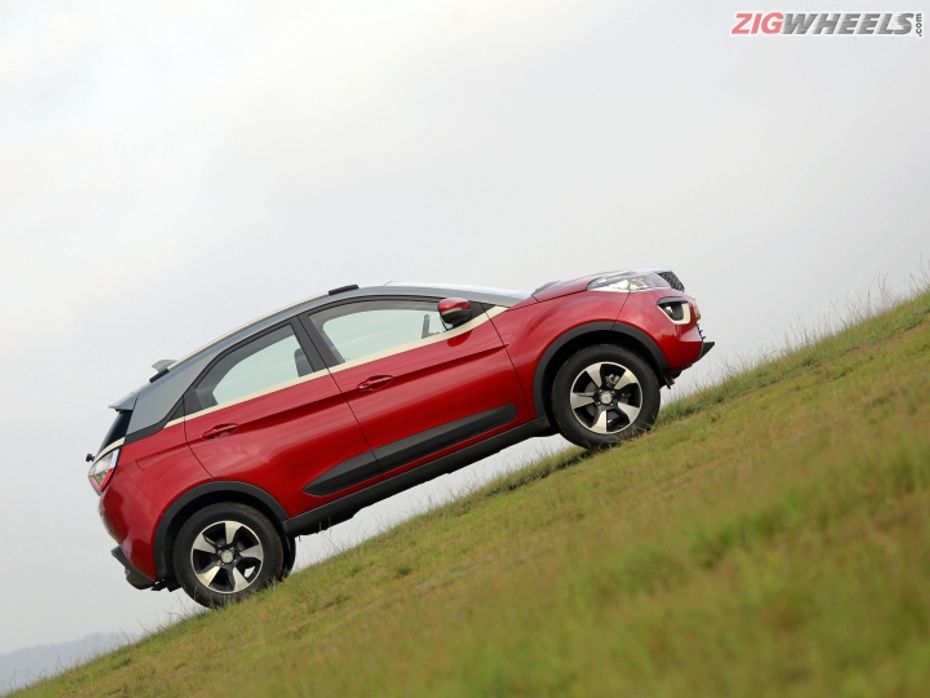
The Nexon has a great stance when looked at from the side, especially because of the small front and rear overhangs; the use of three different colours, the tall ground clearance (209mm when unladen), flush sitting roof rails, a shark-fin antenna, arrow-head like door handle surround and the 16-inch alloy wheels add a lot of flair to the design. The rounded profile of the Goodyear Excellence tyres on the Nexon fit nicely with the curvaceous theme of the SUV, they may look super chunky but they are the same size as the tyres on the Brezza!
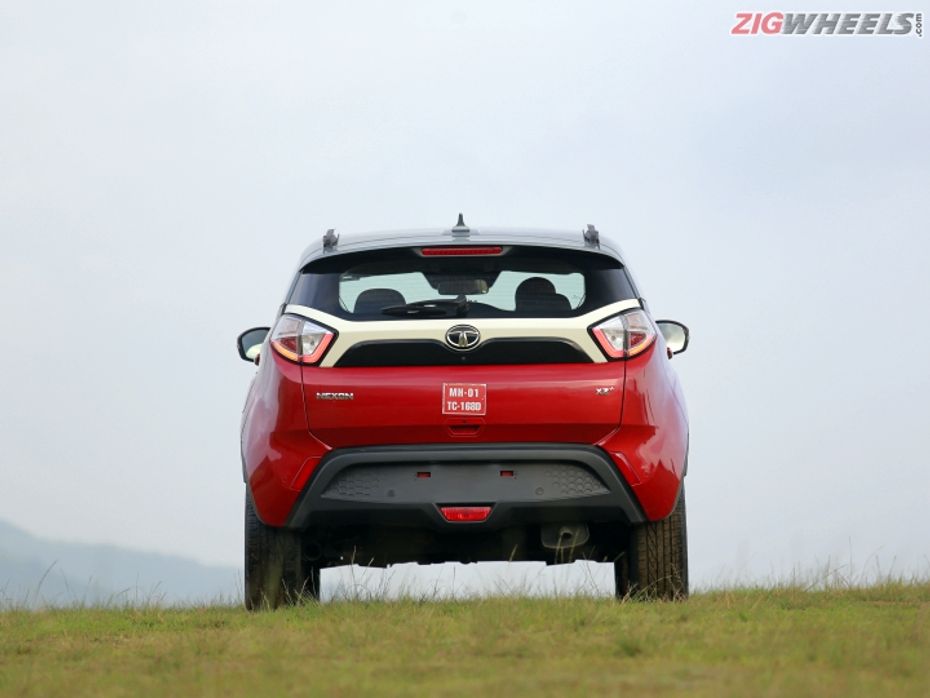
The dramatic design continues out back. The split taillamps with the LED DRLs, roof-mounted spoiler, and the white strip that wraps around the taillamps help the Nexon stand out. The large black insert in the bumper also makes the Nexon look taller than it is as it forces all the visual mass to move up. The rear camera is neatly integrated into the shiny black band below the white sash. In typical modern Tata fashion, the fog lamp is placed at the bottom of the bumper.
Inside story

Inside, the Nexon may not be as concept-car-like as the exterior, it does get a lot of design elements from the 2014 concept - for example the three-layer dashboard and the three-spoke steering wheel design. The dual-tone grey interiors with the shiny silver trim and piano-black inserts give it an understated look, a contrast to the bright and vibrant exterior.
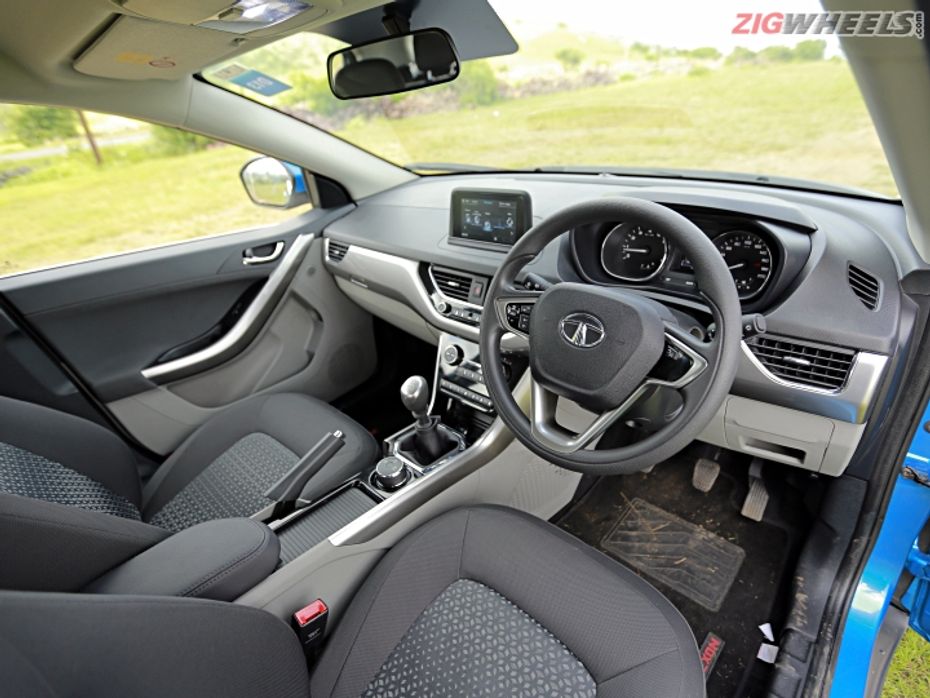
The steering wheel, instrument cluster, climate control panel and buttons on the door pads will look familiar to those who have sat in modern Tata cars, the rest of the cabin is refreshingly new. At the front, the tall centre console divides the cabin into two distinct zones. The occupants sit comfortably thanks to well-contoured seats with a usable centre armrest, the freestanding high-definition 6.5-inch touchscreen infotainment system is eye-catching and falls easily in the driver's field of vision. The stalks behind the steering have a weighted feel to them and all the buttons on the centre console are soft to touch.
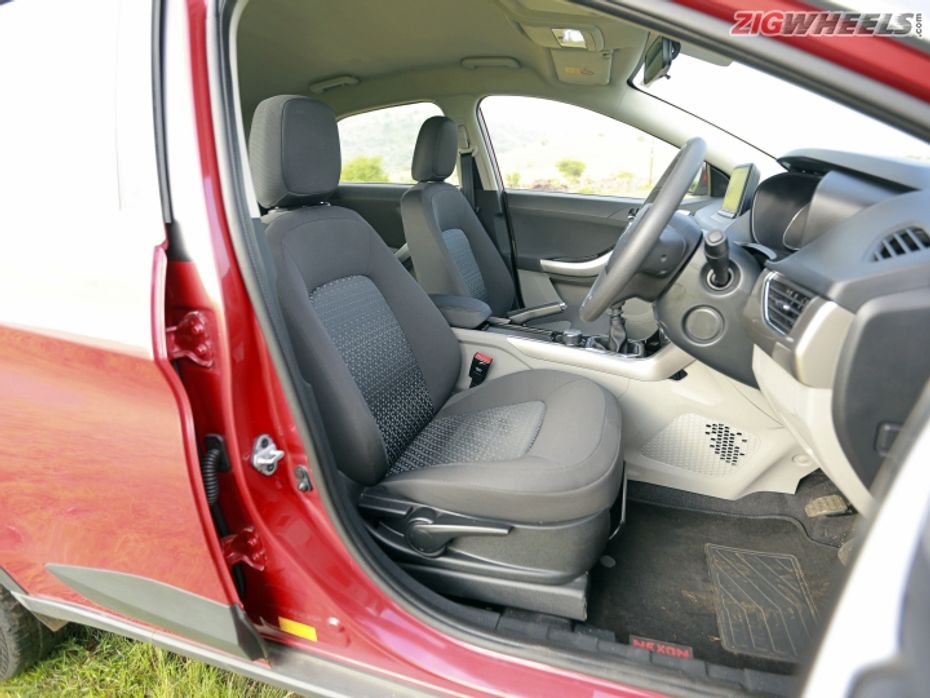
The driver seat is adjustable for height too while the steering is only adjustable for rake. The view out front is good, though the steeply raked A-pillar along with the wide ORVMs do create a big blind spot on the right side. The biggest problem though is the view out of the small (short) rear windshield which will be a problem if you pick any variant other than the top end XZ+.
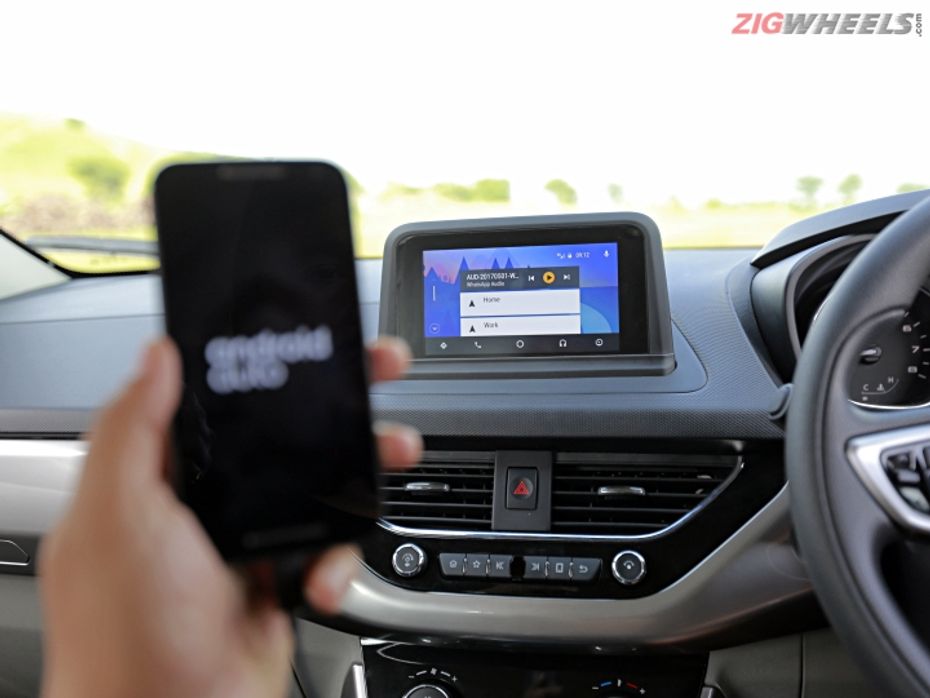
The infotainment system is paired to an 8-speaker Harman surround sound system (4 speakers in lower variants) and, like other modern Tata cars, has the best stock sound system in this segment. While it is smartphone compatible, with Android Auto being offered as standard, one standout feature of the Nexon's infotainment system are the physical shortcut buttons placed on the dashboard. The system responds faster to the commands via these buttons and they’re easier to use while on the move.
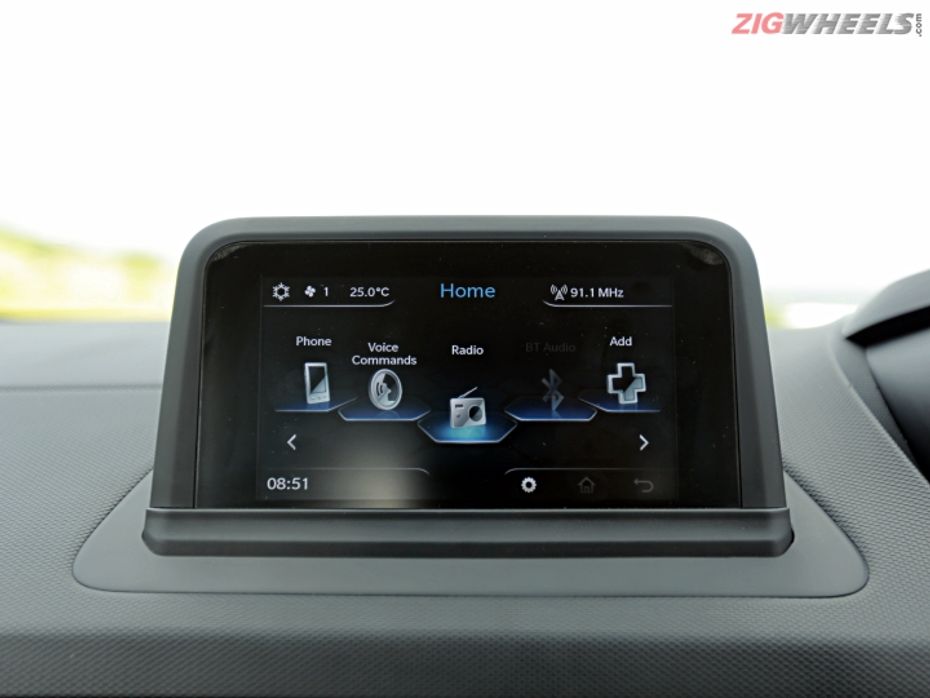
The screen resolution is better than screens used in other Tata cars, but the system is still laggy. While the adaptive guidelines in the reverse camera display is a welcome feature, the quality of the rear camera itself is quite bad - night mode also overcompensates for the lack of light and with everything overexposed, visibility is almost nil.
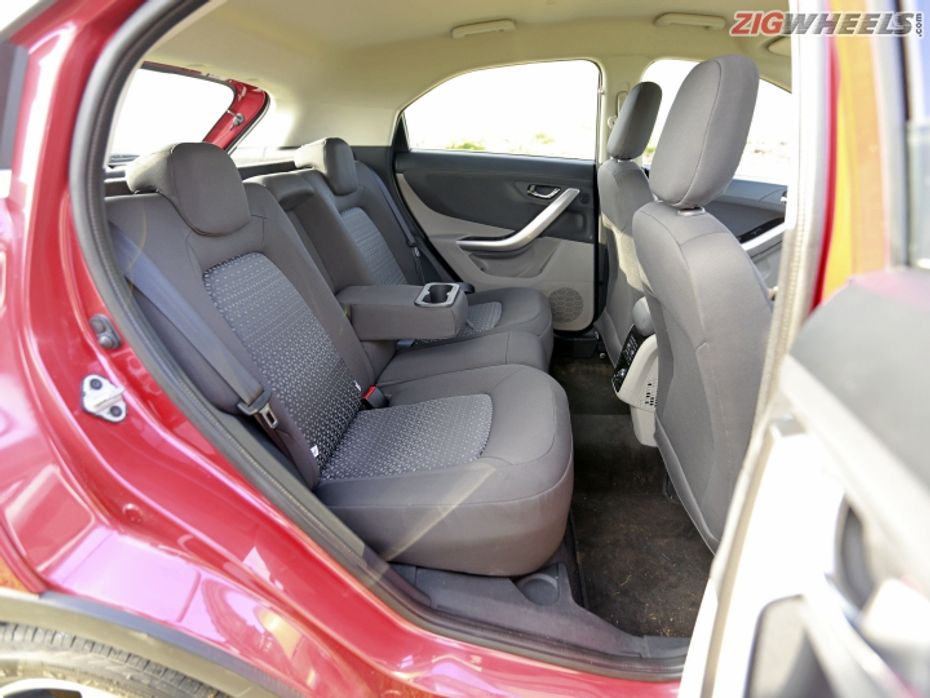
The rear passengers will also find the Nexon's cabin very spacious, though the thick C-pillar does restrict outside visibility and the amount of light coming in. The rear bench is best used to seat two, the contours of the seat suggest so. Each passenger also gets their own adjustable headrests which neatly integrate with the seat when not needed. The centre armrest with the cup holders does add to the comfort factor, though the door-mounted armrests do not get the same fabric cover as at the front. The rear vents may look convenient, but it only gets a two-speed blower and is not too effective at cooling the rear cabin.
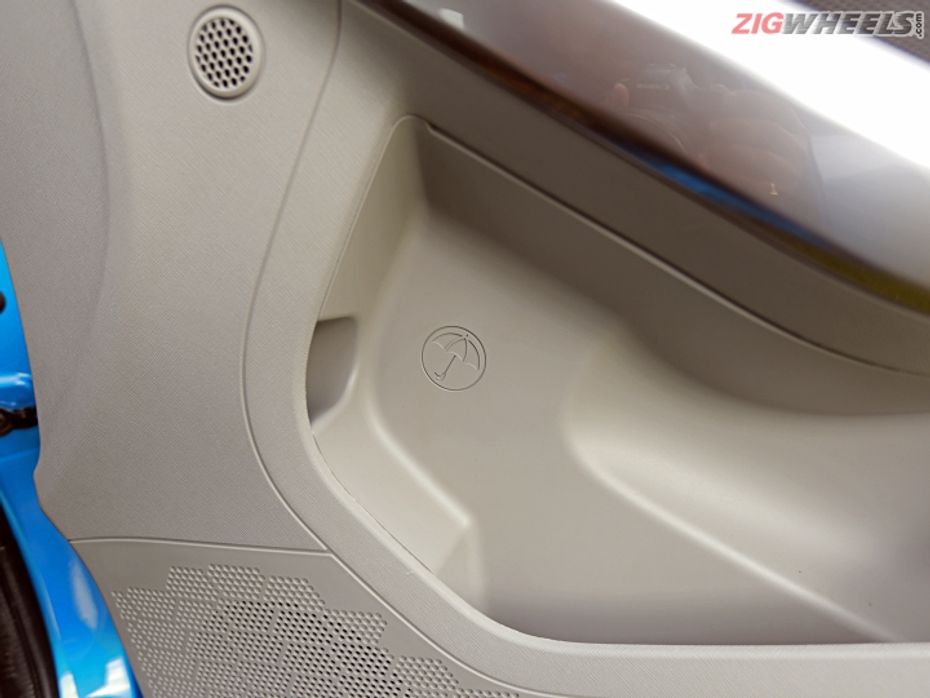
There are many storage spaces around the Nexon's cabin. The tambour door hides a deep but narrow space which gets cup holders, the front passenger footwell has a 2kg bag-hook, the cooled glovebox has a dedicated notebook holder and spaces to tuck in a pen/cards/phone/cans, there is a crevice on the roof along the cabin light which can hold your sunglass, the front door pads have space to keep a two-litre bottle and hold an umbrella (ala Rolls-Royce). Many of these are not very practical though. For instance, the storage space under the tambour door is too narrow and deep to be accessed comfortably, the USB port and 12V charging port are placed awkwardly in front of the gear lever and the umbrella holder can only fit a small umbrella.
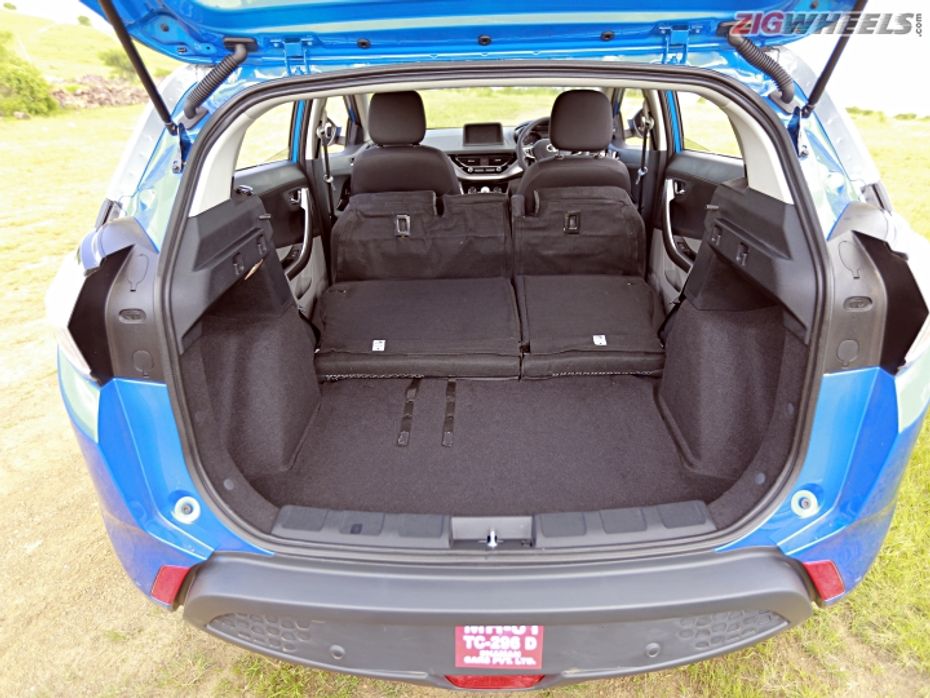
The 350-litre boot is accessible via an openable flip-up hatch door that can be opened only electronically. The rear bench can be 60:40 split folded for practicality. Extra large cargo can be kept in after front folding the rear seat base and folding the rear seat backrest flat.
Get everything right
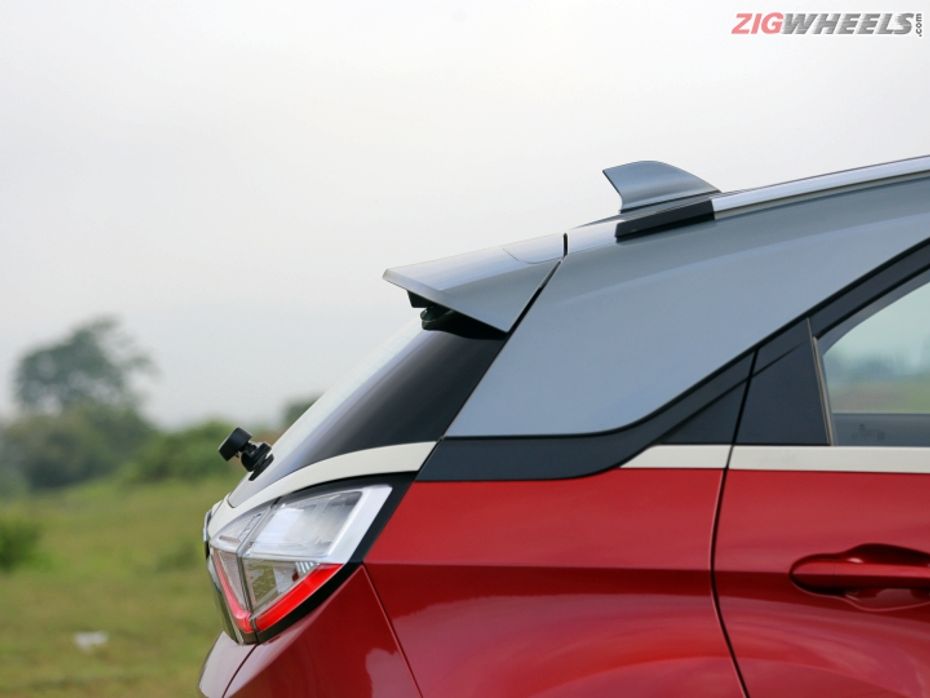
The Nexon may look refreshing from afar, some inconsistencies crop up as you move closer. That unique white sash is not as well integrated as it could have been - some of the panels misalign and could severely affect your OCD. The fit and finish of the different coloured panels on the car could also have been better, and there was a particularly surprising bit of paint overspray on the rear hatch. The strip of red LEDs at the rear also double up as tail lamps at night; while they are bright and noticeable in clear weather, they can be difficult to see when it gets worse (like at night in the rain).
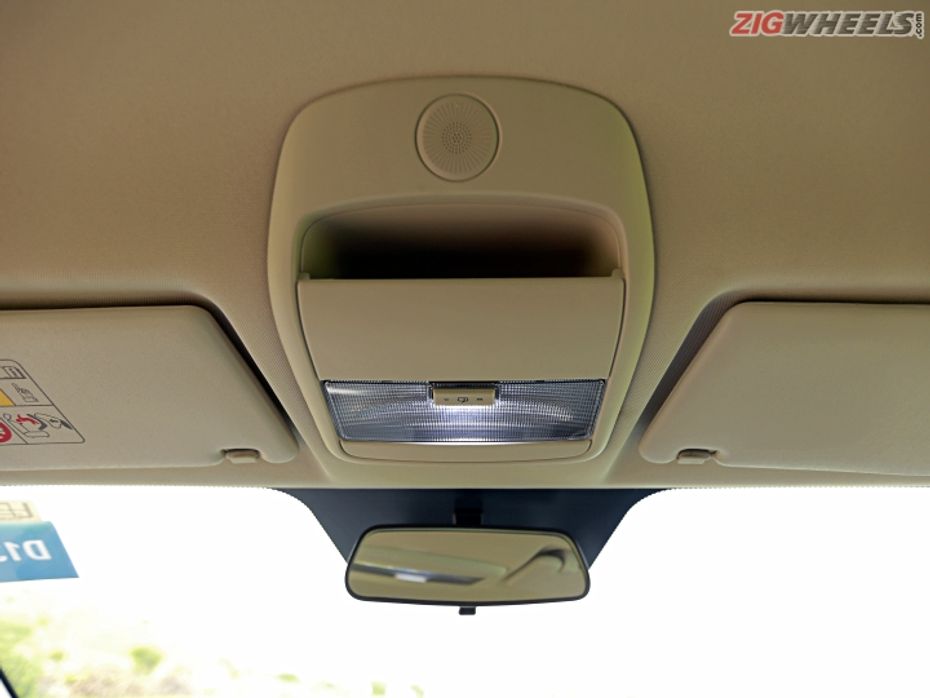
The LED DRLs and LED tail lamps on our test cars were temperamental, with both the test cars experiencing temporary blackouts. The driver-side door lock on the blue car would intermittently refuse to unlock, leading to some equally hilarious and frustrating moments. While Tata did take back the cars and got the problems rectified, the fact that these gremlins turned up in cars which had come fresh off the assembly line makes you wonder if problems like these could crop up in the future too. The long term reliability and quality of parts in Tata cars still remain areas where the company could improve.
Turbocharge all the engines
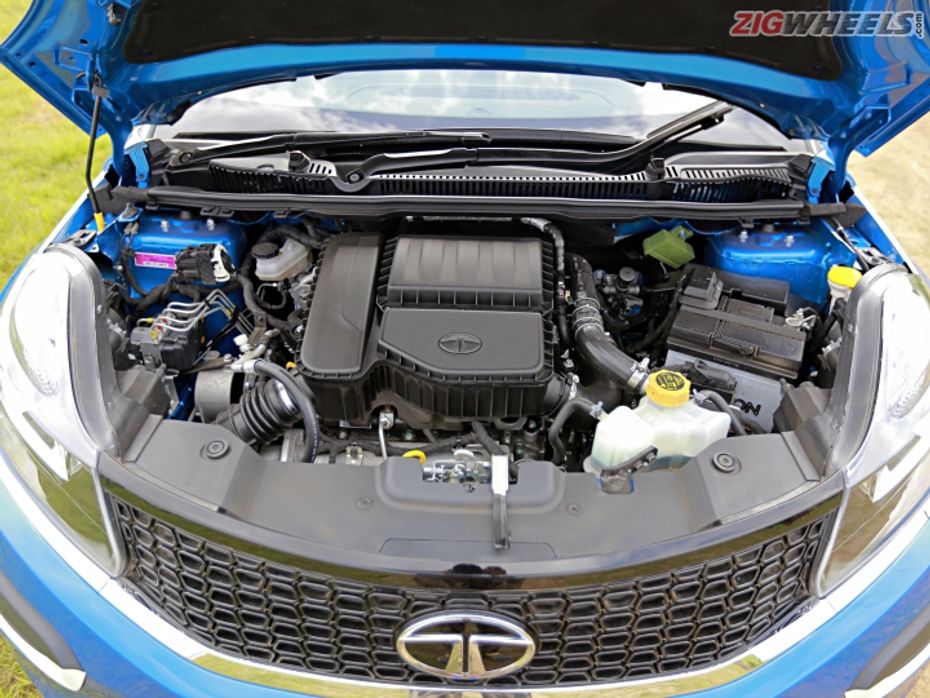
The Tata Nexon is powered by two turbocharged engines, the blue car here packs a new 1.5-litre Revotorq, 4-cylinder diesel while the red car gets a new 1.2-litre Revotron, 3-cylinder petrol.
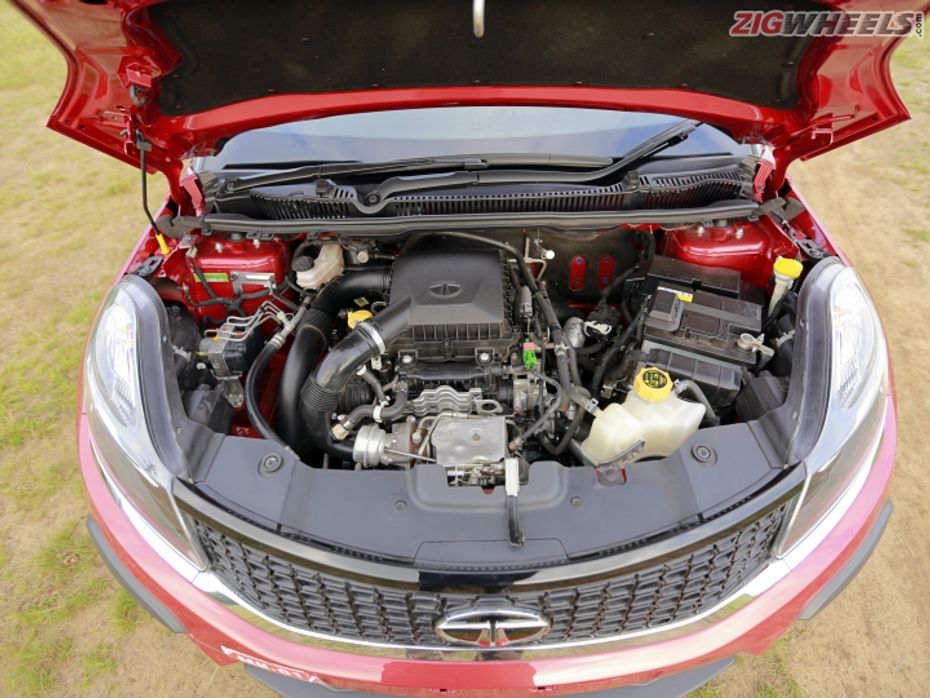
While the 1.5-litre diesel is all-new, the 1.2-litre petrol is actually the same unit found under the hood of the Tata Tigor but with a turbocharger forcing more air into it. On paper, both the engines develop a maximum power of 110PS. The diesel is torquier by nature, but the petrol also has a wider torque curve.
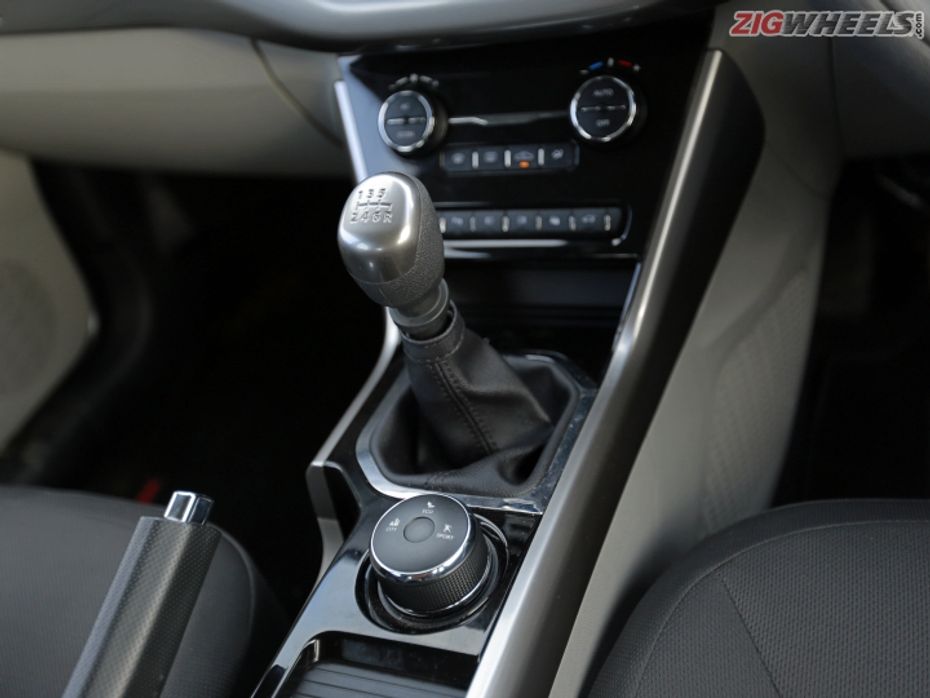
Both the cars get 6-speed manual transmissions with power sent to the front wheels. That big round dial in the centre console of the car helps you choose between three different drive modes - Eco, City and Sport - which significantly change the way the engines perform.
Switch on the cars and the less vibey (because 4-cylinders) and similarly loud diesel (yes, the petrol is that loud) makes you feel more comfortable on the inside. On the move, especially in the city, the diesel's usability comes to the fore. The diesel is always the smoother one to drive in the city, while the petrol suffers from low torque below 1500rpm and a typical power surge of a turbocharged engine past 2000rpm - making the ride very jerky.

The different driving modes - Eco, City and Sport - can be selected via the rotary knob on the centre console behind the gear stick. As the names suggest, these modes change the responsiveness and performance of the engine to suit the needs of each scenario. While the diesel engine remains usable in any of these modes, the petrol feels most usable in the City and Sport mode.
Switch to Sport and you can feel the difference in performance. The throttle response is better and the bump in power as the turbocharger kicks in is also noticeable. While the petrol is faster in the 0-100kmph sprint by more than 1.5 seconds as compared to the diesel, the diesel fares better in terms of in-gear acceleration. In the real world, this equates to the Nexon petrol being faster off the line than the diesel, but overtakes will be much faster in the latter. Tata has also placed a speed limiter on the Nexon petrol which kicks in at an indicated 162kmph, the reason for which is not clear.
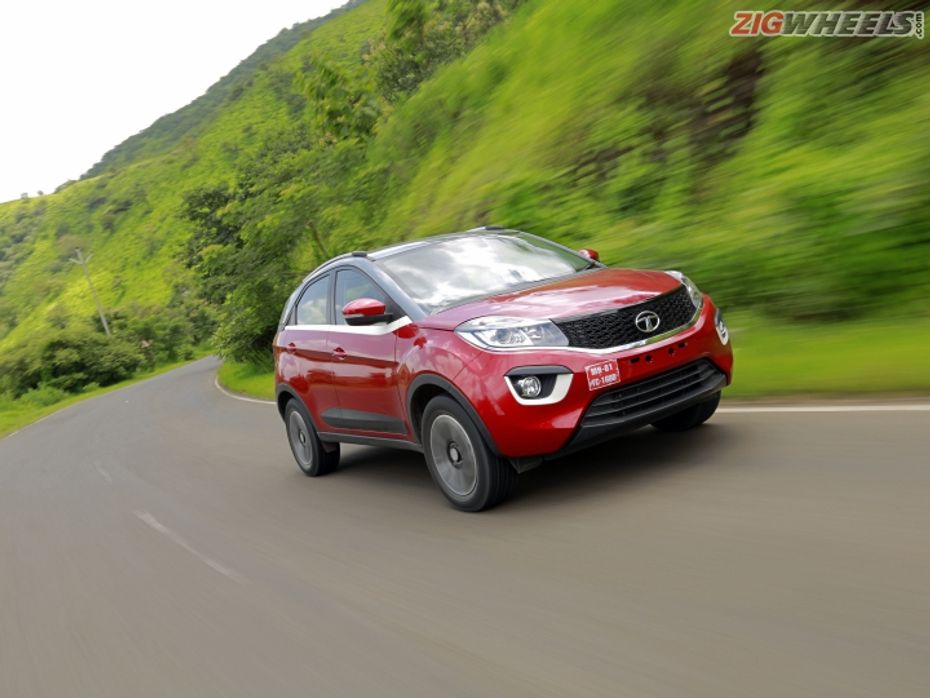
The Revotron petrol engine feels best when driven in Sport; it doesn't work well in any other mode. The spiky power delivery and higher kerb weight (1237kg onwards) doesn't help fuel efficiency too. In our instrumented tests, the Nexon petrol returned 14.03kmpl in the city and 17.88kmpl on the highway. In comparison, the Nexon diesel returns 16.80kmpl in the city and an impressive 23.97kmpl on the highway.
A larger petrol engine could have certainly helped the Nexon feel like a better SUV to drive without compromising fuel efficiency too.
Mind-Blown

Confidence inspiring. That is what the Nexon is when driven hard. The chassis balance is so good that you would have to drive it like an absolute nut to find its limits on the road.
On paper, the Nexon is like any other front-wheel driven vehicle. McPherson struts up front, twist-beam suspension at the rear, discs at the front, drums at the rear and in the Nexon's case 215mm section Goodyear Excellence tyres. While the alloy wheels are 16-inch units, the tyres still have a lot of sidewall. The taller sidewalls along with the firm but pliant suspension soak up most of the road imperfections with little to no complaints.
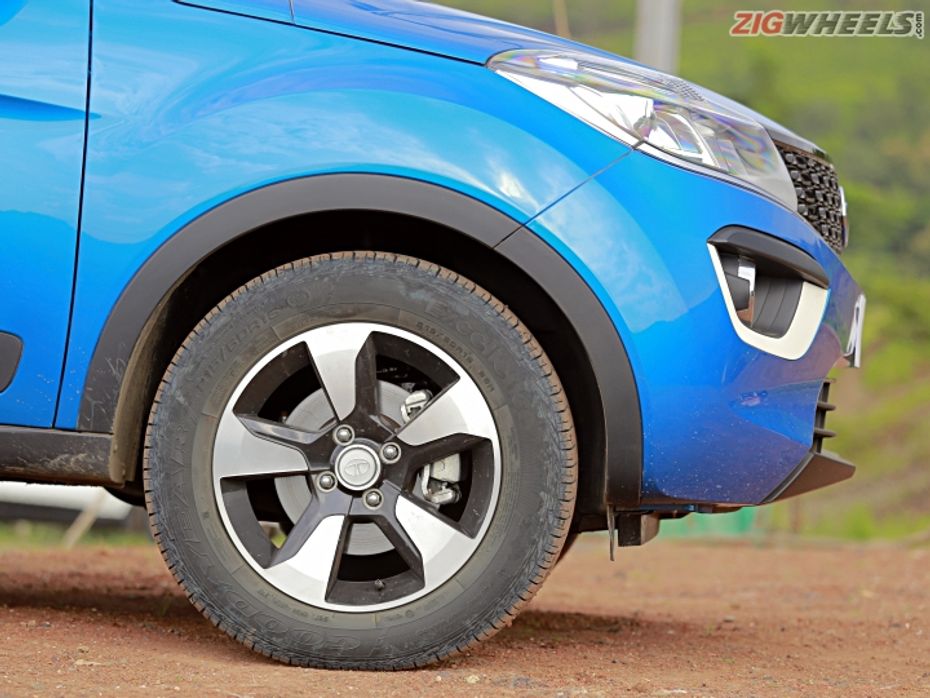
Where the fat tyres really come into their own is when you start pushing the Nexon in the twisties; they seem to keep on gripping the road even when you approach a corner at otherwise nerve-racking speeds. Combine this with the progressively weighted steering wheel and torquey engines (yes, even the petrol) and you have a hoot to play around with. The Nexon reacts to your inputs almost immediately, and you can change your lines in a corner without unsettling it.
There were no instances of tyre squeals over an hour-long session of hard driving over some of our favourite roads around Pune. There were squeals of joy from the drivers though.
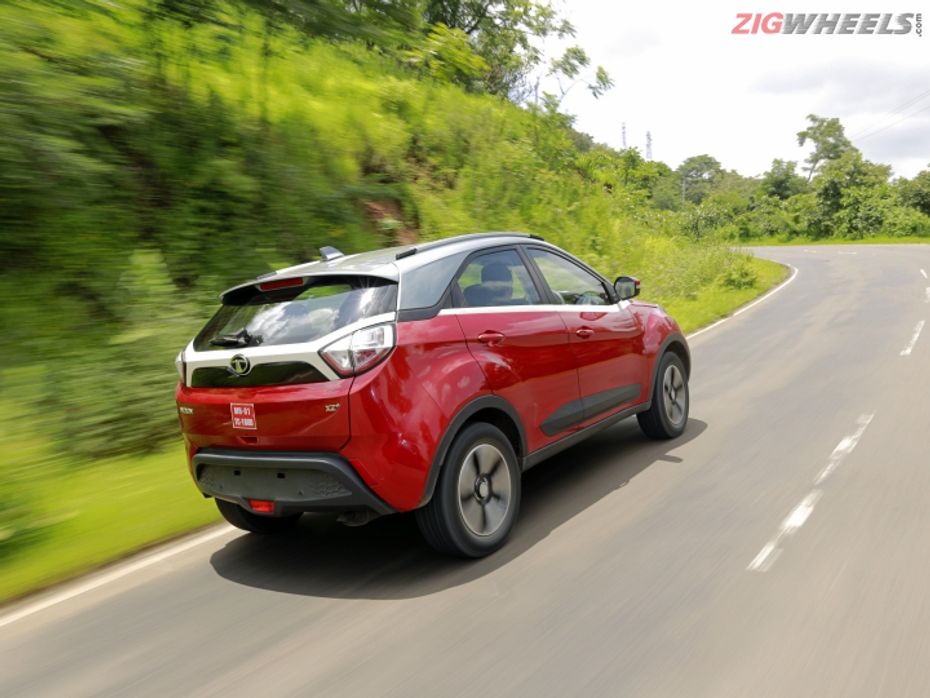
The only thing that could have made the drive better? Sure slotting gear shifts. The six-speed transmissions on both the cars have long throws but the shift quality could have been better; shifting into third was a common complaint during testing. The problem is exaggerated in the Nexon petrol in which constant shifts are required to keep it in its powerband.
Hook, Line and Sinker?
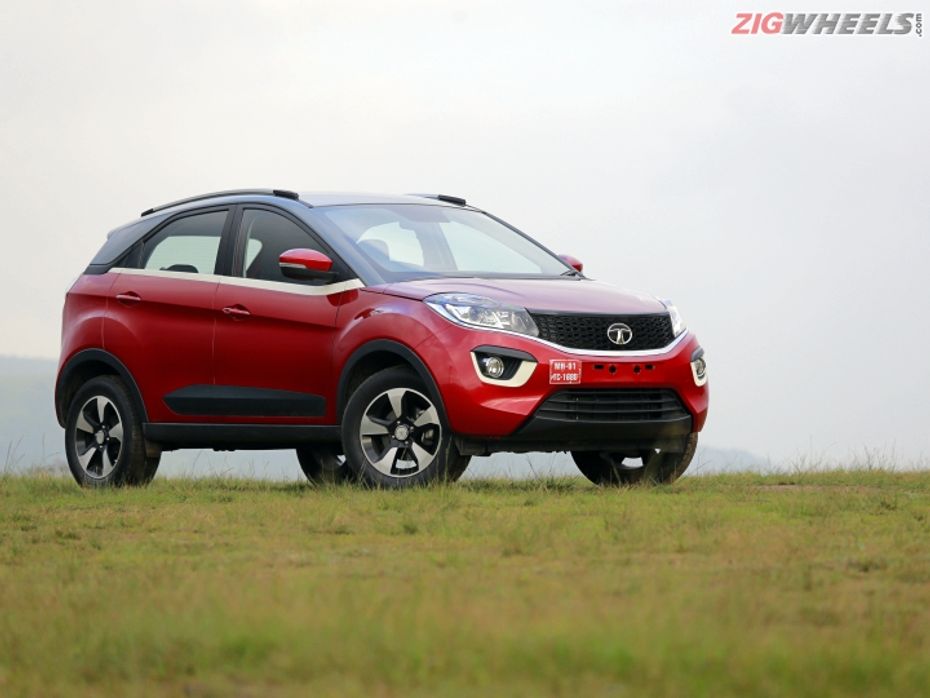
Though we may know the Nexon better than we did after the first drive almost two months ago, our impressions have not changed much. The Tata Nexon is a good product but we would still hesitate in recommending it outright over the competition.
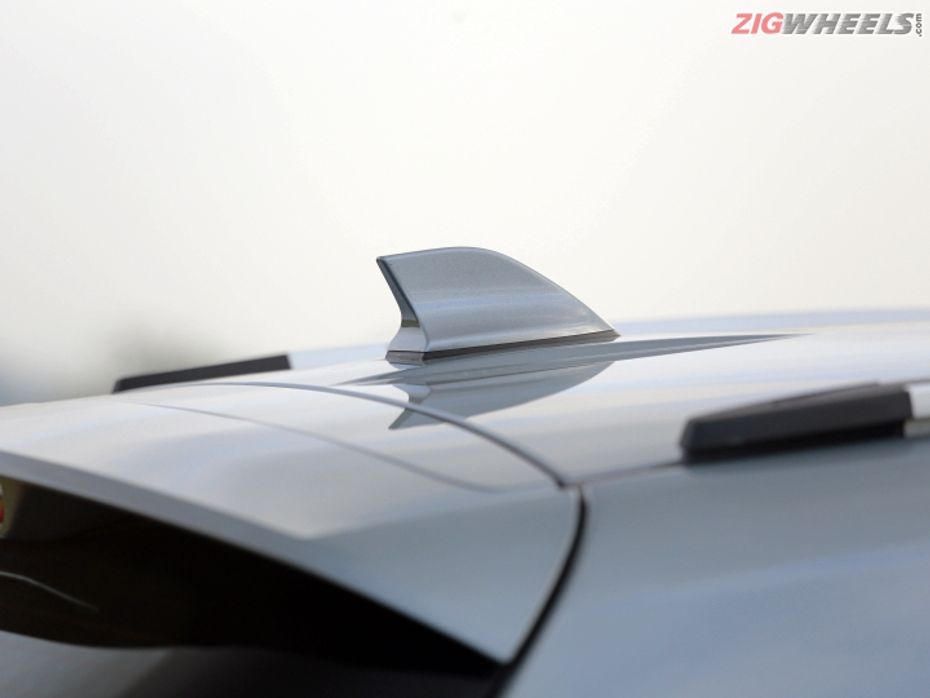
The Nexon looks like nothing else on the road, it will help you stand out and grab attention. The interior is spacious (as much as the Brezza in many regards, comparison review coming soon) and feels special, thanks to the well-appointed cabin. The feature list is long and on par with the competition. In fact, that Harman sound system itself is a good reason to get the Nexon!
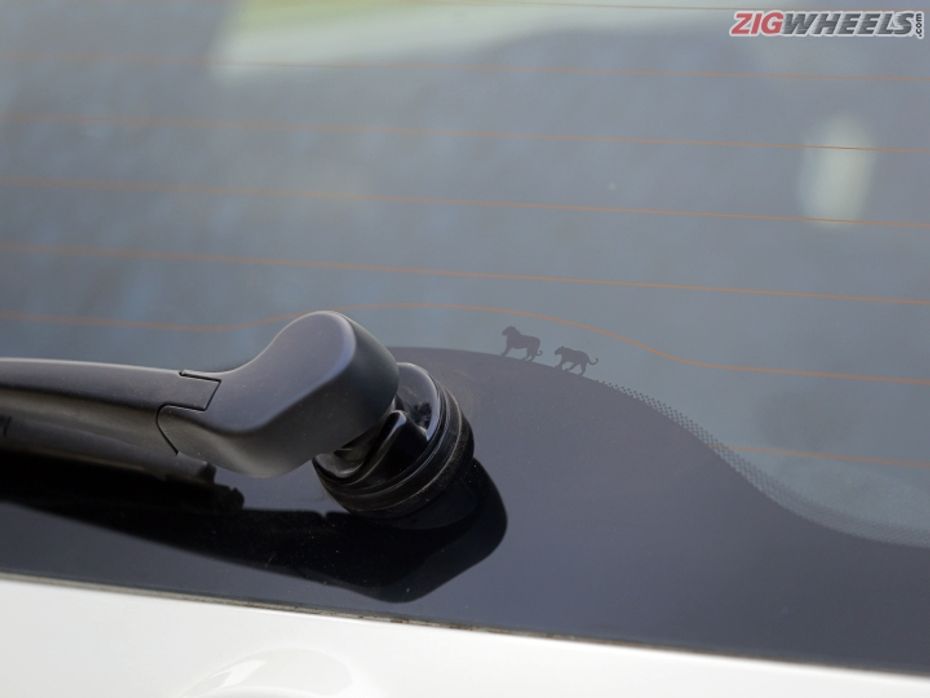
The Nexon rides great over varied surfaces and is actually fun to drive when paired with the very well tuned diesel engine. The diesel engine is also quite frugal when you want it to be. The petrol engine, while being fun when driven hard, is not at home in the city.

The hesitation remains because Tata still doesn't seem to have got over issues with parts quality, consistent reliability and some ergonomics. While Tata has made the Nexon an enticing product by pricing it aggressively, working out the chinks in its otherwise impressive armour would have made it the definite choice in its segment. The Tata Nexon is sure a great step in the evolution of the company's product lineup, but it's still not up there.
Photography: Vikrant Date
| Spec Check | ||
| Nexon XZ+ Revotron | Nexon XZ+ Revotorq | |
| Engine | 1.2-litre, in-line 3-cylinder, turbo-petrol | 1.5-litre, in-line 4-cylinder, turbo-diesel |
| Power | 110PS @ 5000rpm | 110PS @ 3750rpm |
| Torque | 170Nm @ 1750-4000rpm | 260Nm @ 1500-2750rpm |
| Transmission | 6-speed manual | 6-speed manual |
| 0-100kmph | 11.64s | 13.25s |
| 100-0kmph | 3.23s / 40.63m | 2.96s / 41.56m |
| Mileage | 14.03kmpl (city) / 17.88kmpl (highway) | 16.80kmpl (city) / 23.97kmpl (highway) |
| Price | Rs 8.60 lakh | Rs 9.45 lakh |
Recommended Read:
Tata Nexon launched at Rs 5.85 lakh

Maruti Brezza Vs Hyundai Venue Vs Tata Nexon – Ride And Handling

2022 Maruti Suzuki Brezza First Drive Review: Pricier! Techier!...

Hyundai Venue Facelift 2022 Review | A Lot More Desirable?

New Maruti Suzuki Fronx Driven: This Crossover Gives Baby Grand...

Honda Elevate First Drive Review | Sensible Family SUV
 Tata Punch
Tata Punch
 Maruti Brezza
Maruti Brezza
 Hyundai Venue
Hyundai Venue
 Maruti FRONX
Maruti FRONX
 Honda Elevate
Honda Elevate
India's largest automotive community
 Tata Punch
Rs. 5.99 Lakh
Tata Punch
Rs. 5.99 Lakh
 Tata Nexon
Rs. 7.99 Lakh
Tata Nexon
Rs. 7.99 Lakh
 Tata Curvv
Rs. 9.99 Lakh
Tata Curvv
Rs. 9.99 Lakh
 Tata Tiago
Rs. 4.99 Lakh
Tata Tiago
Rs. 4.99 Lakh
 Tata Harrier
Rs. 14.99 Lakh
Tata Harrier
Rs. 14.99 Lakh
 Kia Syros
Rs. 8.99 Lakh
Kia Syros
Rs. 8.99 Lakh
 Tata Punch
Rs. 5.99 Lakh
Tata Punch
Rs. 5.99 Lakh
 Hyundai Creta
Rs. 11.10 Lakh
Hyundai Creta
Rs. 11.10 Lakh
 Mahindra Thar ROXX
Rs. 12.99 Lakh
Mahindra Thar ROXX
Rs. 12.99 Lakh
 Tata Nexon
Rs. 7.99 Lakh
Tata Nexon
Rs. 7.99 Lakh